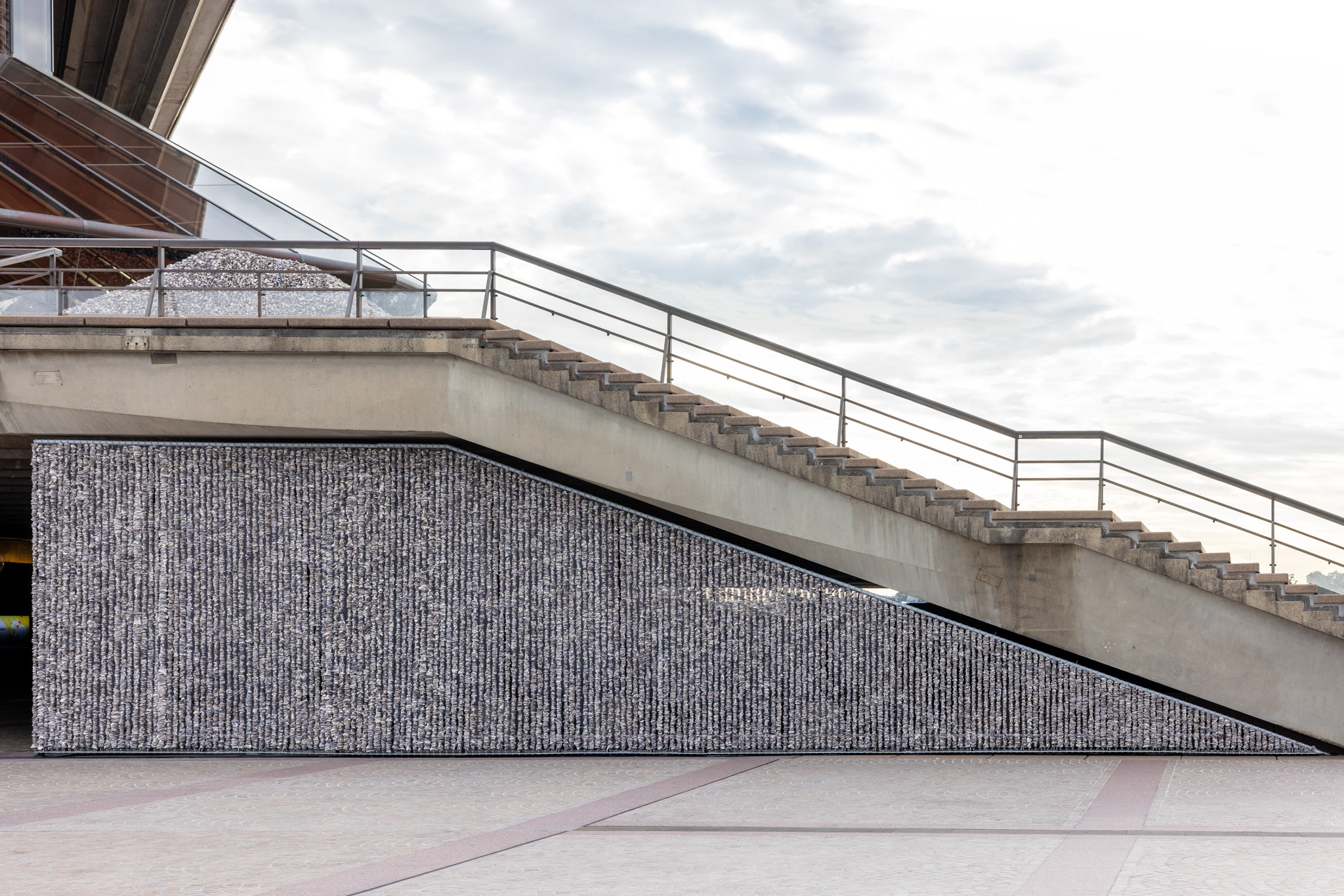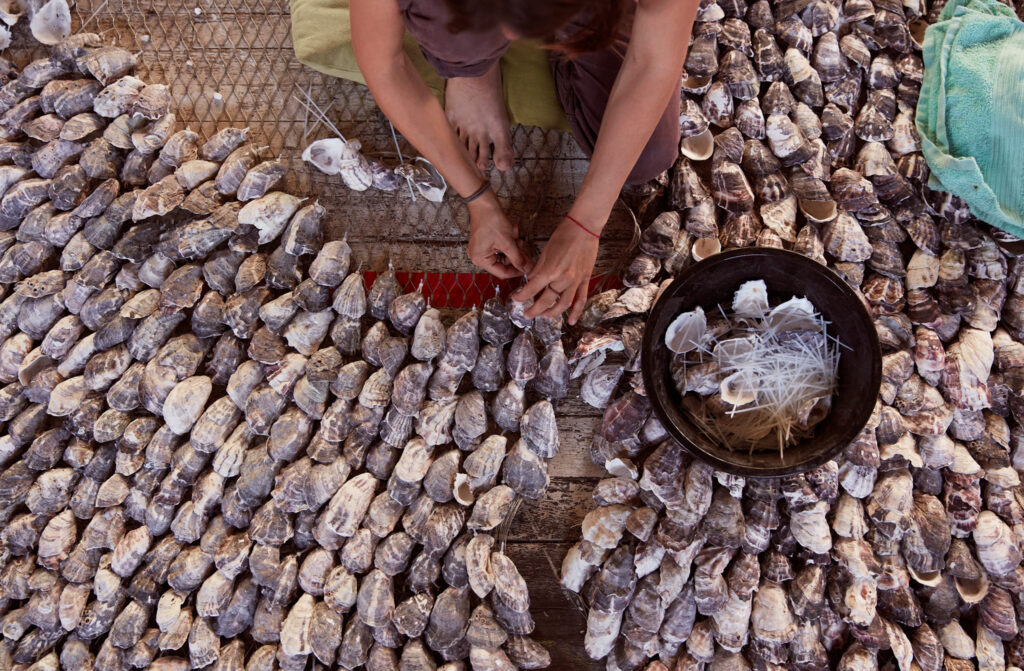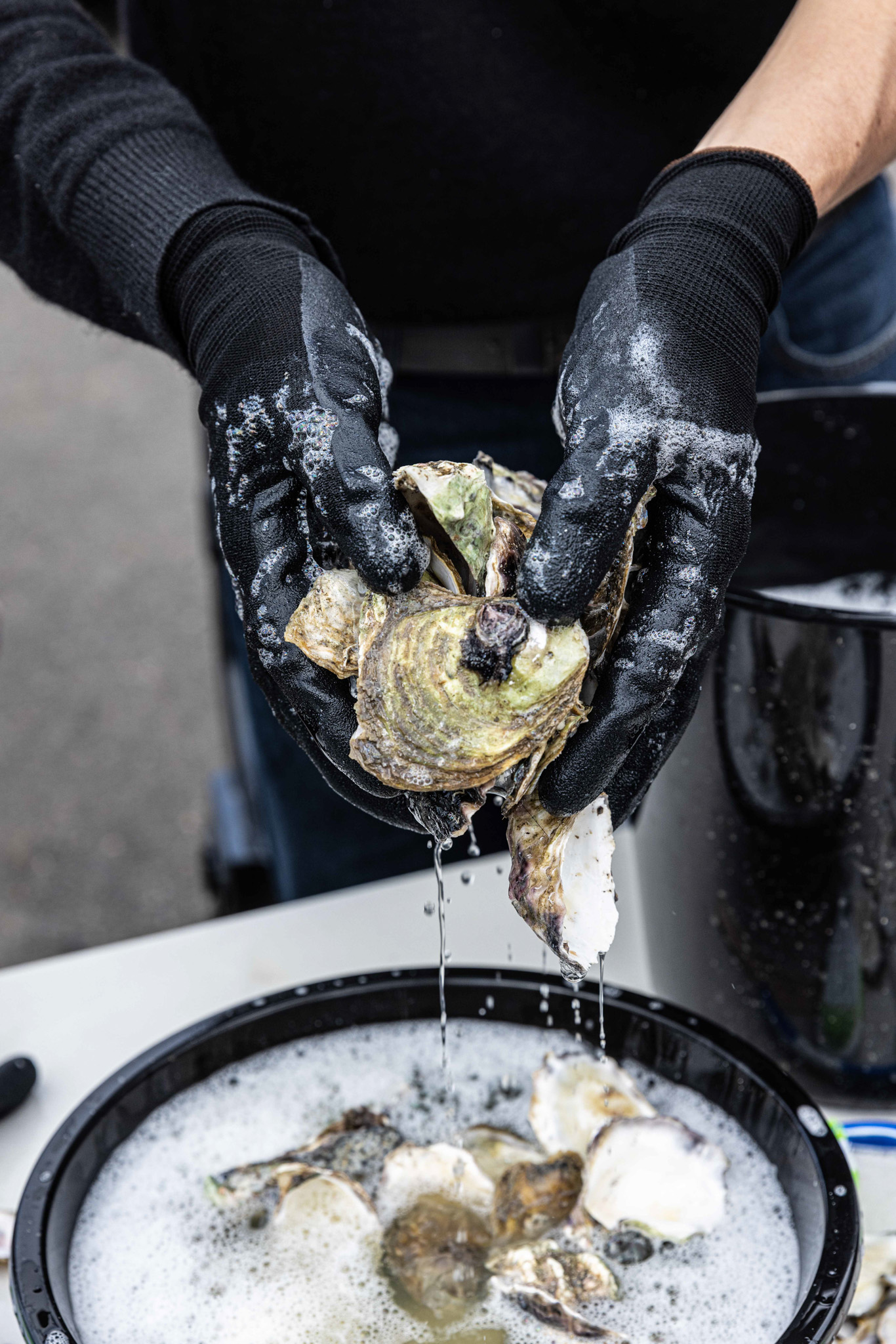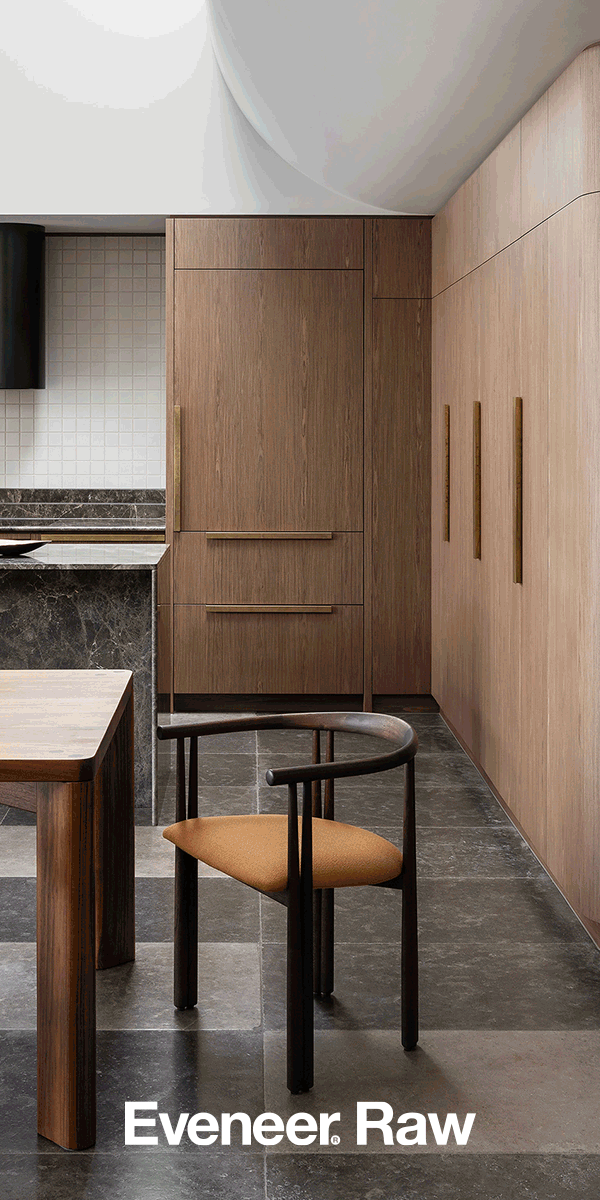Leopold Banchini’s first Australian project hovers in unplugged and off-grid splendour above an alluvial Walden. Through conversations with the...
Whispers: the Dual Celebration of the Sydney Opera House's 50th Anniversary
Quandamooka artist Megan Cope blends art and conservation with Indigenous history and practice in her large-scale midden installation Whispers. The installation – comprised of a 14m wall and 200 timber Kinyingarra Guwinyanba poles covered in kinyingarra (oyster) shells – seeks to restore decimated oyster reefs in Sydney Harbour and emphasise the resilience, and historic erasure, of First Nations custodianship, culture and Country at the world-renowned site. Cope’s Whispers prompts us to consider the role of art and architecture in bringing about cultural and ecological change.
Essay
Marni Reti
Photography
Daniel Boud, Zan Wimberley, Katje Ford

Whispers is a monumental artwork that highlights the significance of the shell middens created over thousands of years by First Nations people. In this image Whispers reads in section as a midden reaching over five metres tall. Photo: Daniel Boud
Australia’s built environments have radically evolved to engage with Indigenous notions of Country, cultures and communities. This way of thinking, after all, has existed for more than 70,000 years. Studies and discussions in this area – taking place in the margins of academia and practice since the 1980s and 1990s – have gained traction through an increasing population of Indigenous practitioners through the 2000s and 2010s, and are now being established through policy, mainstream tertiary education curriculums and architectural practice.
The 50th anniversary of the Sydney Opera House, an iconic Australian structure, in 2023 has coincided with the fact of Indigenous peoples’ custodianship and connection to Country being more recognised and accepted in our society than ever before. This connection is well established archeologically, historically and culturally. The duality of contemporary Australia’s built environments and traditional – ancient and ongoing – Indigenous knowledge systems are epitomised in an installation titled Whispers by Quandamooka artist Megan Cope. Hailing from Moreton Bay/North Stradbroke Island in South East Queensland, Cope’s upbringing on Quandamooka Country in the bush and by the ocean consistently informs her practice; she aims for her work to be accessible and to possess a personal connection to her family so that they can engage with it as if it is their own. Whispers, commissioned for the 50-year anniversary of the Sydney Opera House, is described by Cope as an ‘offering’ – an offering to Country, to ancestors and to the Opera House. As a public artwork, it is also an offering to the broader community; it reveals the unseen layers of this famous harbour, the extraction of the kinyingarra (‘native oyster’ in Jandai language) shells used, the erasure that has occurred here, and to provide a call to action for the future.
Whispers is a series of grand monuments reflecting ancestral midden sites and practices installed around the Sydney Opera House precinct – on Gadigal Country – enveloping the world-renowned structure into the monumental public artwork. These immersive sculptures connect the history of this place to its contemporary built environment, aptly demonstrating how Cope incorporates her intimate relationship with Indigenous histories and her passion for environmental activism into the work. Over 85,000 oyster shells – both pacific and native species – were collected from restaurant and public waste disposals for the project. These shells reflect the ancestral midden sites – shell piles associated with cultural feasting and gathering – of Tubowgule (Bennelong Point) that were formed by First Nations peoples whose families gathered in this place over millennia.

Cope notes that the monuments are intended to decentre anthropocentric ideals and the self in their scale and representation. In doing so, they take three distinct forms: the mound, the shell wall and the kinyingarra poles. The forms acknowledge the ancestors first, then the extraction of the shells and their erasure. The 14m wall of shells hangs like a curtain on the east of Bennelong Point, beneath the stairs of the Opera House, intended to appear as if the building’s large concrete form is resting on a midden. When walking with your back to the water of Circular Quay, the mound is visible – the midden emerges through the upper podium, connecting the sculptures to the Opera House.
The northern boardwalk of the precinct is populated by 200 Kinyingarra Guwinyanba poles – timber poles covered with bands of oyster shells. They evoke a history of Quandamooka aqua culture, community and resilience. The poles are the most recent development in Cope’s sculptural work, designed to be planted in the intertidal zones and evolve into living sculptures to provide future reef foundations. Kinyingarra Guwinyanba poles speak to the risk of extinction that oyster reefs are currently facing. It is Cope’s hope that these poles will serve as an example of the work that Indigenous communities have been doing, and will continue to do, to protect and conserve Country.


The native oyster connects many nations with saltwater across the world; all people who inhabit these coastlines maintain a relationship, and fascination, with the creature. Whispers’ intimate connection to saltwater Country echoes that of Cope, who was raised with a respect for, and reliance on, saltwater Country and the sustenance it provides. Through her work Cope shares how it feels to have a sense of obligation and responsibility to Country, to protect it through environmental consciousness, as it has protected and sustained her, as well as generations of her Peoples. She shares her long-held belief in the oyster’s critical role in culture, society and our ecosystem. The Kinyingarra Guwinyanba poles offer a call to action to address the risk of extinction facing oyster reefs across the globe today. The sense of urgency to move forward with this call – to speak to this issue at both a micro and macro scale – is palpable when standing among the poles.
Whispers brings experiences of First Nations erasure and the traumatised past of Country, due to capitalist extraction, to light. It is about mob continuing to talk about and remember the colonial violence we’ve had to be quiet about for so long. The artwork itself isn’t quiet in scale or intent, but it is gentle. It is respectful: respectful to Country and our old People by telling the true history of the site. It is also respectful to Jørn Utzon’s vision for the Opera House. Through Whispers, Cope loans an Indigenous lens to the site, allowing observers to reimagine the framework of the Opera House’s architecture through her sculptural interventions.

The Sydney Opera House and Whispers together reflect the duality of the Australian landscape today. Both are a part of the living culture of Sydney; both allow future and past generations to enjoy that culture, to access stories from different Countries and from all over the world. They are intricately connected and literally interwoven into one another. This artwork has the power to evoke great sadness and grief within those who, perhaps for the first time, are beginning to consider and understand what was taken from this site, what was lost and what it is yet to come. It also inspires and takes strength from Indigenous peoples’ readiness to make the changes we need to see on Country, to look after this place as we always have.
The broader community’s readiness for this action was undeniable throughout Whispers’ creation. Over 3000 volunteers contributed to the artwork by cleaning, drilling, polishing and assembling – often threading by hand – across 100 community workshops held at the Opera House Forecourt, Sydney’s Addison Road Community Centre and Cope’s Brisbane studio. These workshops were ingrained
with storytelling and building kinship and community. For Cope, the pride evoked by the process and its outcome is met only by the excitement during installation, as she expressed, “People are so moved by the little oyster.”
The oyster shell is a small token of saltwater Country that has become a monumental public artwork led by a Quandamooka artist, created by community, and encompassing Australia’s most iconic modern architectural structure. Cope’s Whispers is a staunch, but reverent reminder of this country’s true history and its united future.

Beneath Utzon’s famous ‘shells’ of the Opera House, Cope’s Whispers rises on the podium using over 85,000 native and pacific oyster shells. Photo: Daniel Boud

Here, a member of the Scrub Club washes oyster shell refuse from the Sydney Fish Market for use in the installation. Photo: Katje Ford

